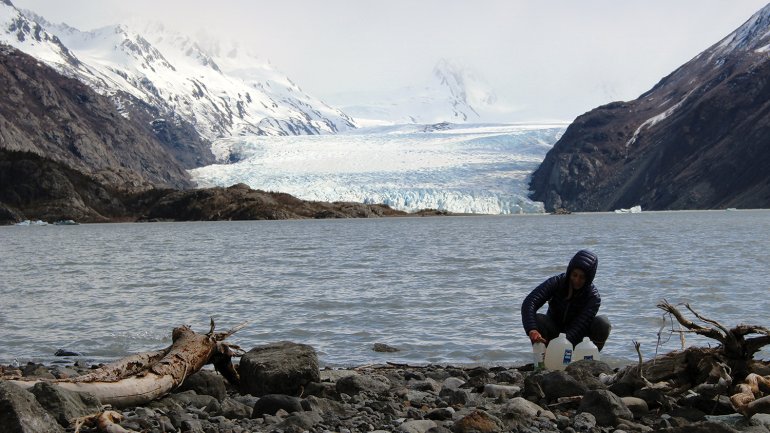Plot Lines
Plot Lines
Adrien Segal’s art is like three-dimensional reportage. She has worked with materials ranging from plywood to Plastilene to snowmelt, and every piece tells a story – often one of environmental trauma – that’s supported by data sets spanning anywhere from days to decades.
Much like Rachel Carson, whose 1962 book Silent Spring alerted the public to the harmful effects of pesticides, the 32-year-old Segal has an alchemical talent for transforming hard, cold, even brain-numbing facts about the state of the planet into evocative works of art. Segal describes her process as parlaying the “complex poetics of statistical information into lines, forms, and materials that express changes in the landscape.”
But her pieces do more than express phenomena; she is also on a mission to humanize science. “I want my work to be a bridge from the objectivity and distance of data to the kind of emotional response that scientists often don’t – or can’t – allow themselves, sometimes at their peril,” she says. (Some climate change researchers, who comprehend more fully than most the ramifications of their research, experience depression, she points out.)
Segal, who works out of a shared woodshop in the San Francisco suburb of Alameda, graduated from California College of the Arts in 2007 with a degree in furniture design. Although she never pursued science in college, by her senior thesis she was already engaged in a research-based practice inspired by personal experiences in the landscape – in this case, the tides washing through the haunting ruins of the Sutro Baths, a series of saltwater-fed swimming pools along the San Francisco coast that opened in 1896 and burned down in 1966.
“I started thinking about humans harnessing the power of the tides for their own pleasure,” says Segal, who discovered that San Francisco is the site of the National Oceanic and Atmospheric Administration’s longest continually operating tide station, which has verified water levels since 1854; today it measures them every six minutes.
Segal digitally layered the daily tide charts to show a full lunar cycle as one visual graphic, then scaled and printed the charts to be used as templates – translating the undulations into swirls of hand-bent steel fixed within a walnut frame. (Despite its lack of usable surface area, Tidal Datum (2007) sold to a woman determined to install it as a coffee table.)
Snow Water Equivalent Cabinet (2011), a 7-foot-tall cabinet with an ebonized oak carcass and 31 plywood drawers, may be as close to functional as any of Segal’s pieces get. In the design, Segal applied two data sets culled from 30 years of government statistics on snowpack at Ebbetts Pass in the Sierra Nevadas. The height of each drawer correlates to total annual precipitation, while the curvy, protruding plywood fronts are a literal reflection of that year’s snowpack, from first snowfall to last melt.
“Snow is this natural, beautiful system for storing water, which is released through melting in the summer,” says Segal, who has a fondness for the stuff, having grown up in Boulder, Colorado, in the foothills of the Rockies. “Drawers in drought years are a quarter-inch thick, and literally can’t hold anything. The idea of comparing water storage to how we store things in our homes lends it some humanity,” she says of the data, which are gathered to help forecast water supply.
Although Segal has depicted such phenomena as wind currents and wildfires, she does have a special affinity for water, which also happens to be a potent barometer of climate change.
One of Segal’s most graphic pieces is also her most ephemeral. Grewingk Glacier (2015) was inspired by camping out in the Alaskan wilderness by the 13-mile glacier near Kachemak Bay and maps the shape of the glacier’s terminus as it has receded over 150 years, at an average of 92 feet per year. Using digital and hands-on design and fabrication, Segal made a plywood model and a silicone mold, which she filled with snowmelt and froze. A time-lapse video shows the ice sculpture melting in the sun over the course of a day — making for a profoundly visceral viewing experience, as one is able to observe the destruction of decades in a matter of hours. Toggling as she does between aesthetics and polemics, Segal hazards that her sculptures embrace both.
“It’s not that I’m trying to be an environmental activist per se, but the pieces speak for themselves – you can’t help but think about the subject a little bit differently. And ultimately, I think that’s the best way to invite people to engage.”




